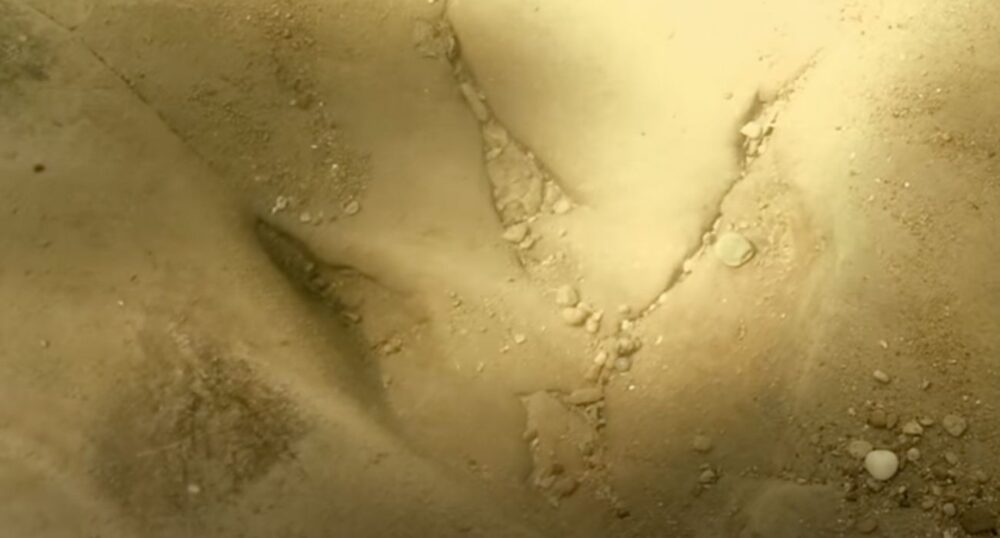An unexpected silver lining of extreme drought has been the revelation of over 75 new dinosaur tracks at Dinosaur Valley State Park in Glen Rose.
Volunteer researchers have spent much of the summer scouring the dried-up portions of the Paluxy River.
“It has been another very hot, very dry year so our researchers are trying to take advantage of the drought,” explained Jeff Davis, park superintendent, according to The Dallas Morning News. “This is not normal for us. Normally, this would all be underwater.”
The park was already known for its prehistoric traces, with visitors able to follow a series of fossilized tracks.
These include the tracks of a long-necked Sauroposeidon, the largest animal believed to have ever walked on Earth. Sauroposeidon, the state dinosaur of Texas, stood up to 110 feet tall and weighed between 55 and 66 tons.
Another dinosaur represented in the tracks is an Acrocanthosaurus, a carnivore similar to the T. Rex that stood 13 feet tall and was 40 feet long.
The new tracks date back to 113 million years ago and were formed as the giant creatures walked in the soft sediment beneath the water or over mud flats. These prints eventually hardened into limestone, preserving them for observers today.
Of course, these traces of prehistoric life won’t stay visible for long. When the drought conditions end, sediments and water will cover them again.
“These won’t be here forever,” Davis said. “We do whatever we can to preserve these pieces of history.”
To achieve this, researchers photograph, measure, and take molds of the tracks. Mapping them out helps scientists to better understand how dinosaurs lived, including their migratory patterns.
This is actually the second year in a row that drought conditions in the area have revealed previously hidden dinosaur tracks in the park.
Somervell County, which hosts the park, has been experiencing extreme drought, with July seeing 1.5 inches less rain than usual, according to the U.S. Drought Monitor.
As previously reported in The Dallas Express, the recent statewide drought has also revealed some interesting ruins of a WWI-era wooden boat in the Neches River. The finding is believed to have been from a government-commissioned fleet of ships built during the war in shipyards in nearby Beaumont.

